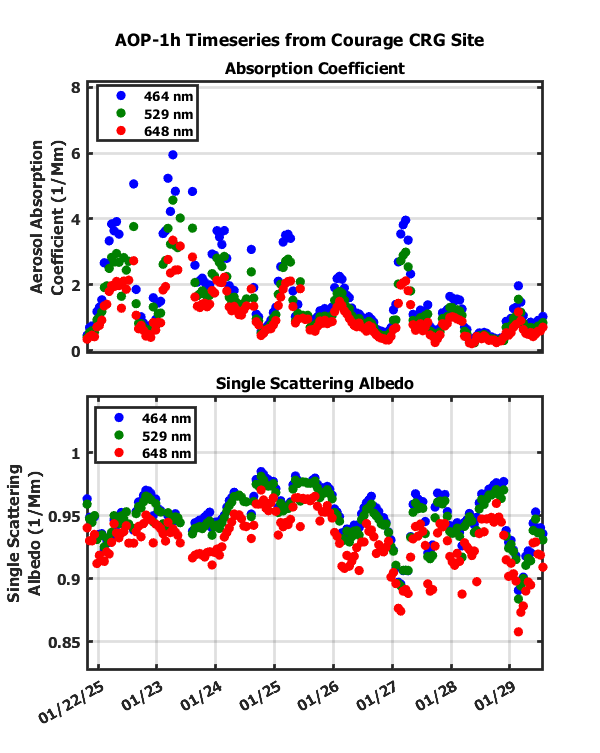Aerosol Optical Properties Data Produced for 2 Ongoing ARM Deployments
Published: 31 July 2025

The Aerosol Optical Properties value-added product (AOP VAP) is now available for the Atmospheric Radiation Measurement (ARM) User Facility’s Bankhead National Forest (BNF) atmospheric observatory in northern Alabama and the Coast-Urban-Rural Atmospheric Gradient Experiment (CoURAGE) in the Baltimore, Maryland, area.
AOP consolidates aerosol absorption and scattering measurements from two ARM instruments into a single file. These measurements are used to understand how aerosol particles absorb and scatter light. Scientists can use AOP data to improve understanding of aerosol effects on energy in the atmosphere and to evaluate earth system models.
The optical absorption measurements may also be used to infer the quantity of soot in the atmosphere. The scattering measurements can be used to derive aerosol mass loadings and, in some cases and with additional assumptions, an aerosol size distribution.
For both the BNF and CoURAGE deployments, AOP combines light absorption data from a particle soot absorption photometer and scattering measurements from a nephelometer to calculate aerosol optical properties at three wavelengths. Calibrations and corrections are applied to both the scattering and absorption data to yield a consistent data product with uniform application of literature corrections.
AOP data are available starting from October 1, 2024, at the BNF main site and from December 1, 2024, at CoURAGE’s rural supplemental site (S2) near Mount Airy, Maryland. For both ongoing deployments, ARM provides the AOP data at one-minute and one-hour time resolution.
More information about AOP, including the technical report, can be found on the VAP web page.
Scientists can begin using the BNF and CoURAGE AOP data now. Data are processed in near-real time and are generally available one to two days after the input data are received on the ARM servers.
Access the data in the ARM Data Center. (To download the data, first create an ARM account.)
For questions or to report data issues, please contact ARM aerosol translator John Shilling or VAP developer Brian Ermold.
Data can be referenced as doi:10.5439/1369240 for the one-minute version and doi:10.5439/1369241 for the one-hour version.
Keep up with the Atmospheric Observer
Updates on ARM news, events, and opportunities delivered to your inbox
ARM User Profile
ARM welcomes users from all institutions and nations. A free ARM user account is needed to access ARM data.


















